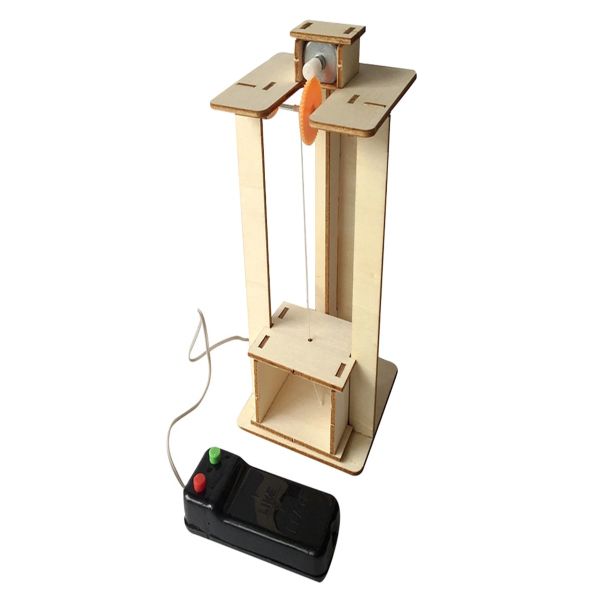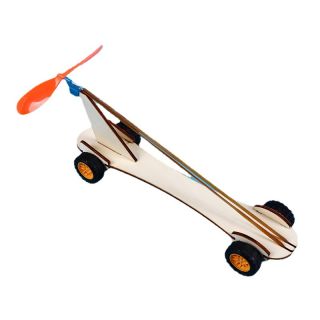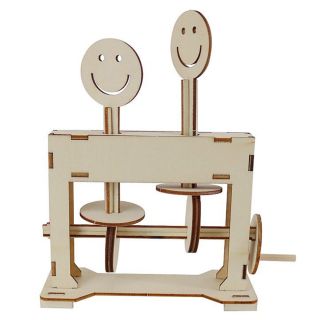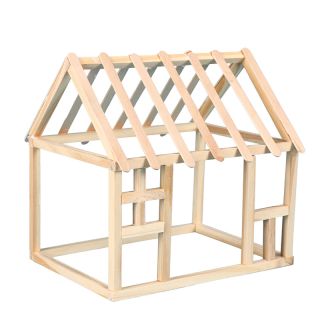All Categories
Elevator Kit - Cat# 80-50-W025
In stock
SKU
80-50-W025
CA$9.80
- Buy 2 for CA$8.95 each and save 9%
- Buy 6 for CA$8.15 each and save 17%
The elevator is a kind of vertical elevator powered by a DC motor, gears while equipped with a box-shaped pod used for multi-storey buildings to take people or carry goods. The vertical elevator has a car that runs between at least two rows of vertical or rigid guide track. The control switch allows students to forward/reverse the motor which in turn would lift the elevator car and drop it. This is a great project to cover concepts like systems in action, mechanims, stable structures etc. *See ADDITIONAL RESOURCES above to access our Teachers Resource guide pertaining to this kit.
Primary Division (Grades 1-3)
Overall Expectation: Explore structures and mechanisms, including the roles of materials in supporting structures and making devices work.
1. Specific Expectation: Identify and describe the purpose of simple machines such as levers and pulleys.
· Activity: Use the Elevator Kit to demonstrate how pulleys work in lifting the elevator. Discuss the role of pulleys in making work easier and explore different configurations to understand mechanical advantage.
Junior Division (Grades 4-6)
Overall Expectation: Investigate the principles of forces, energy, and control in simple machines and structures.
1. Specific Expectation: Explore the relationships between the components of simple machines and the forces acting on them.
· Activity: Use the Elevator Kit to study how forces like gravity and tension affect the elevator’s movement. Experiment with adding weights to the elevator platform and observe changes in force requirements.
Intermediate Division (Grades 7-8)
Overall Expectation: Investigate the ways in which technological problem-solving meets human needs and leads to innovation.
1. Specific Expectation: Analyze the impact of friction and lubrication on the efficiency of mechanisms.
· Activity: Use the Elevator Kit to investigate how friction affects the elevator’s performance. Experiment with different materials for pulleys and gears to reduce friction and discuss the importance of lubrication in machine efficiency.
Secondary Division (Grades 9-12)
Overall Expectation (Physics Focus): Apply principles of physics to understand the operation and efficiency of mechanical systems.
1. Specific Expectation: Analyze mechanical advantage and efficiency in simple and compound machines.
· Activity: Use the Elevator Kit to explore concepts of work, energy, and power. Calculate mechanical advantage and efficiency of the elevator system at different loads and speeds, and discuss real-world applications in engineering and technology.
Cross-Curricular Connections
Mathematics: Calculate gear ratios, mechanical advantage, and efficiency using mathematical formulas.
Technology: Explore modern elevator systems, automated controls, and safety features in comparison to the kit’s design.
Language Arts: Write reports or presentations on elevator technology, historical developments, and future innovations in vertical transportation.
By integrating these teaching elements, students can gain a comprehensive understanding of mechanical principles, technological innovation, and real-world applications, all while meeting the Ontario Science Curriculum expectations. The hands-on nature of the Elevator Kit enhances student engagement and fosters critical thinking in STEM disciplines.












